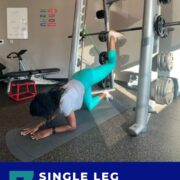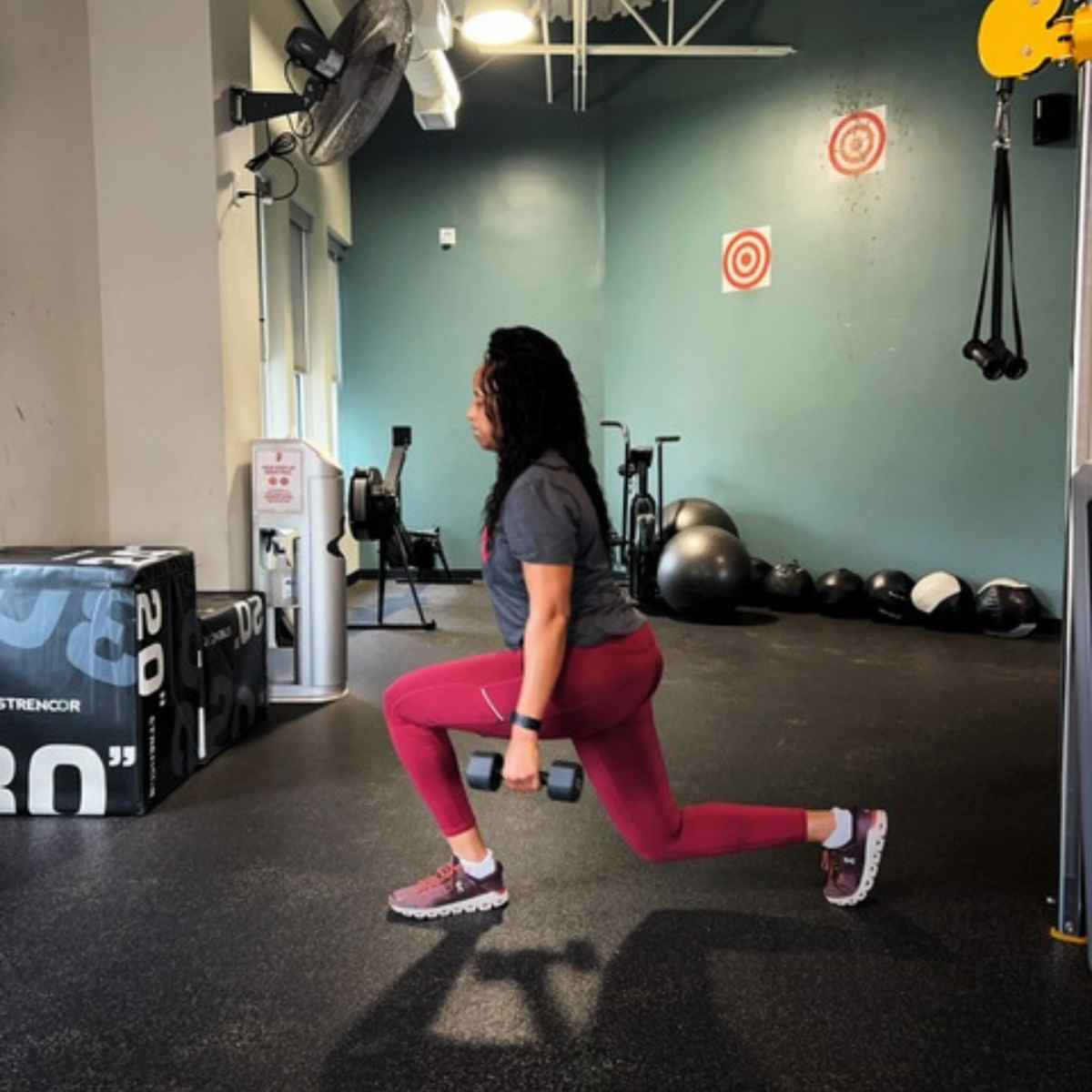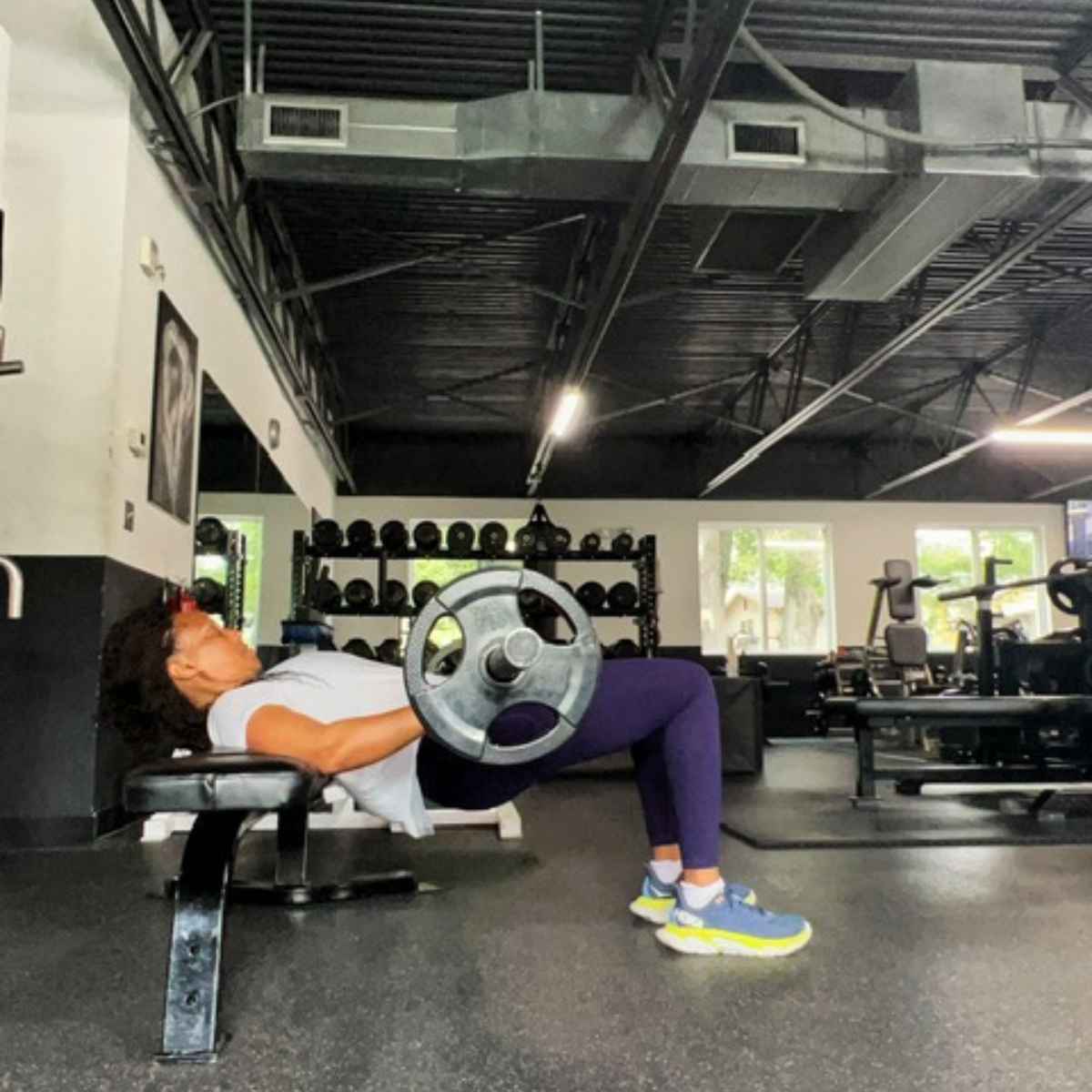7 single leg exercises: improve strength and balance
Single leg exercises and single-leg movements should be a part of any training program to enhance their overall strength and balance. These exercises, often underestimated and underutilized, play a crucial role in building strong legs and a strong foundation.
At the heart of single-leg exercises lies their capacity to improve balance, something that is often not realized until you do single leg work. These exercises challenge stability, requiring our bodies to engage countless small stabilizer muscles.
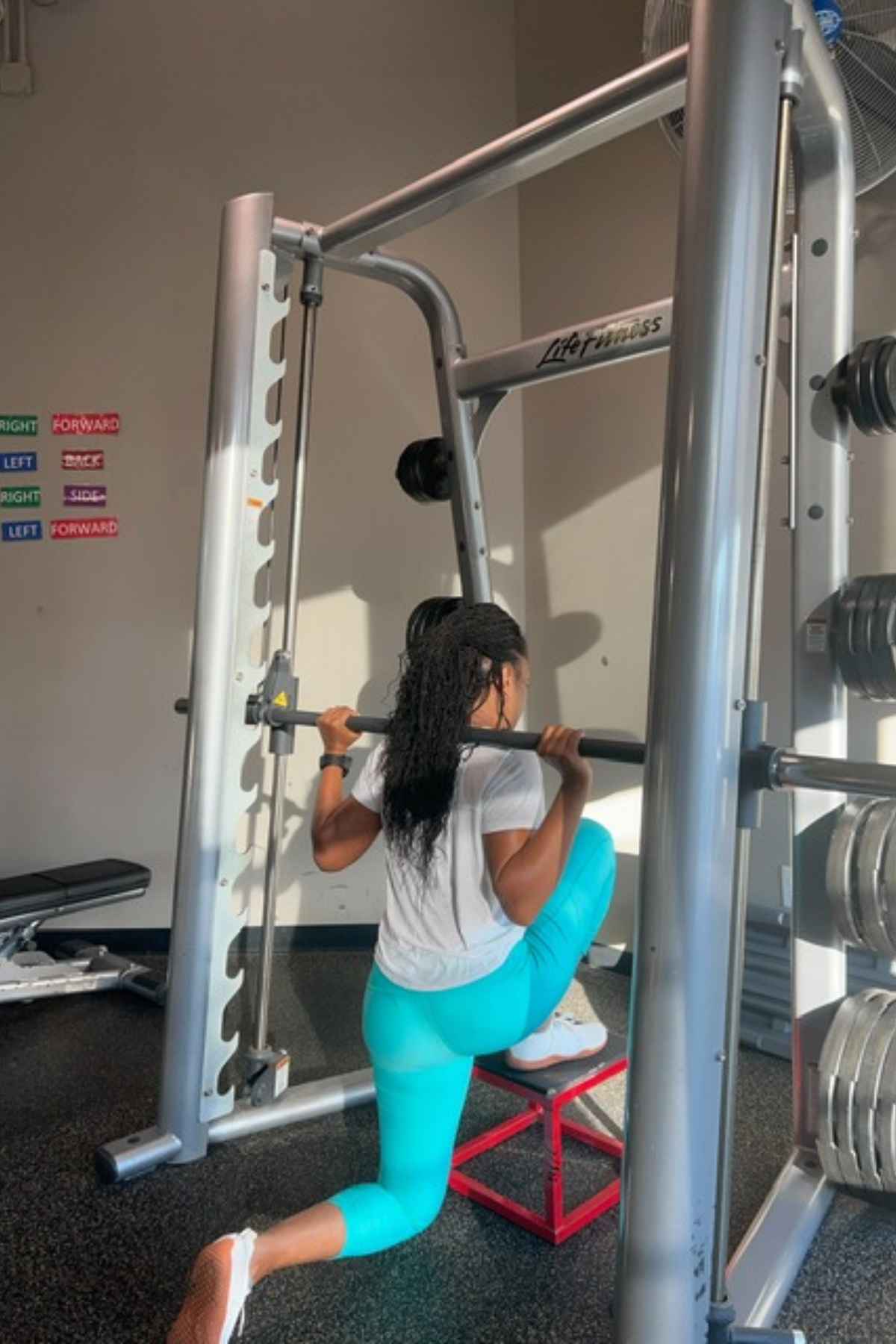
Disclaimer: Please note that some of the links are affiliate links and I may earn a small commission, at no cost to you, if you make a purchase through those links. See my disclosure for more information.
Outfit Details
- TOP: Breathe Short Sleeve Top
- LEGGINGS: Heat Gear No Slip Leggings
- SHOES: Minimalist Shoes
Whether you’re aiming to build lean muscle or enhance functional strength for daily activities, these exercises target muscle groups more precisely than when doing bilateral exercises like squats and the leg press.
What are unilateral exercises?
Normally, when we exercise, we use both legs together, like in jumping or running. But with single leg movements, we focus on just one leg.
These exercises are unilateral exercises, meaning we work “one-sided” or “one at a time.” So, when we talk about unilateral leg exercises, we’re talking about exercises where you work on one leg while the other leg takes a little break.
You’ll find that by intentionally adding single leg strength work into your program, it will help each leg become strong independently. Sometimes, one leg can be stronger than the other, and this can cause problems or injuries. Unilateral leg exercises are the best way to even out their strength.
Benefits of single leg exercises
- Stronger legs: When you perform single leg exercises like lunges, step-ups or single-leg squats, the leg you’re using has to work extra hard. This intense focus on a single leg helps activate and strengthen the specific muscles in that leg, including the quadriceps, hamstrings, calf muscles and your glutes.
- Improves muscle imbalances: Sometimes, one leg can be stronger than the other without us realizing it. Single leg exercises help even out the strength between your legs. This balance is crucial because it reduces the risk of injuries and allows both legs to contribute equally to activities like walking and running.
- Improved coordination: When you use just one leg, it challenges your body to coordinate better. This means your brain and muscles learn to work together, making you more agile and graceful in your movements.
- Reduced risk of injury: Single leg exercises can help fix muscle imbalances. If one leg is stronger than the other, it can lead to injuries. These exercises help even things out and reduce the chances of getting hurt.
- Functional strength: These exercises make your leg muscles strong in a way that’s useful for everyday activities. Whether it’s climbing stairs, playing sports, or lifting things, your legs will be up for the task.
Single-leg exercises
SIngle leg exercises can be done with dumbbells, barbells, kettlebells, resistance bands or your body weight. I dedicate once a week to single-leg work because I have found that my left leg is the weaker side of my body.
Smith machine deficit reverse lunge
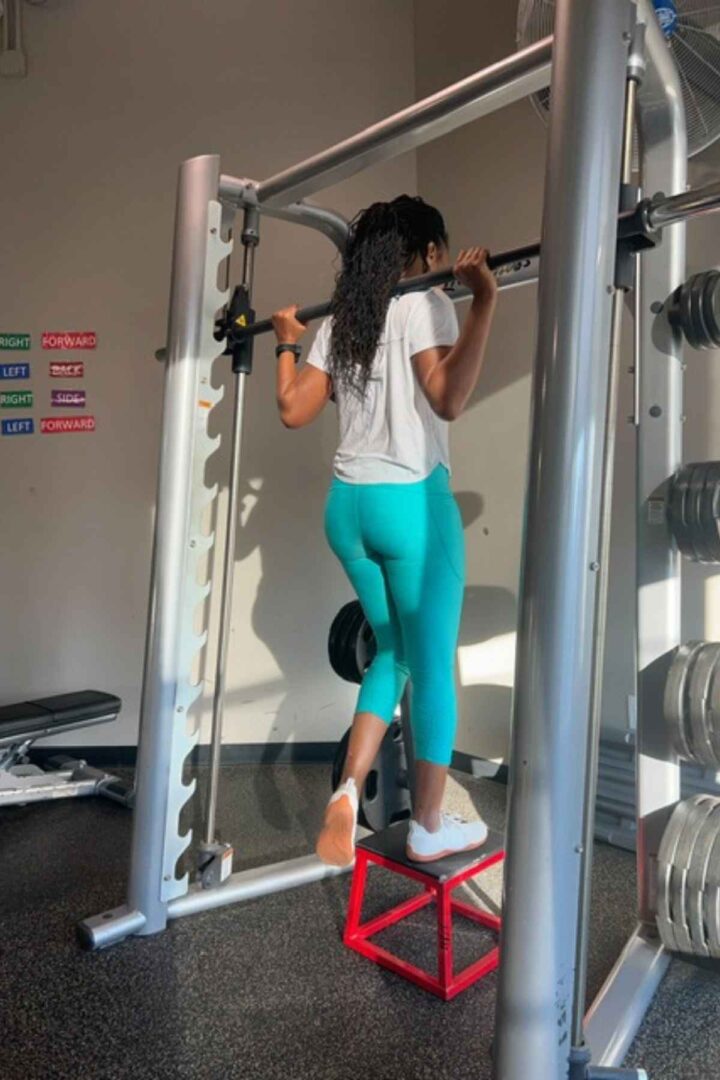
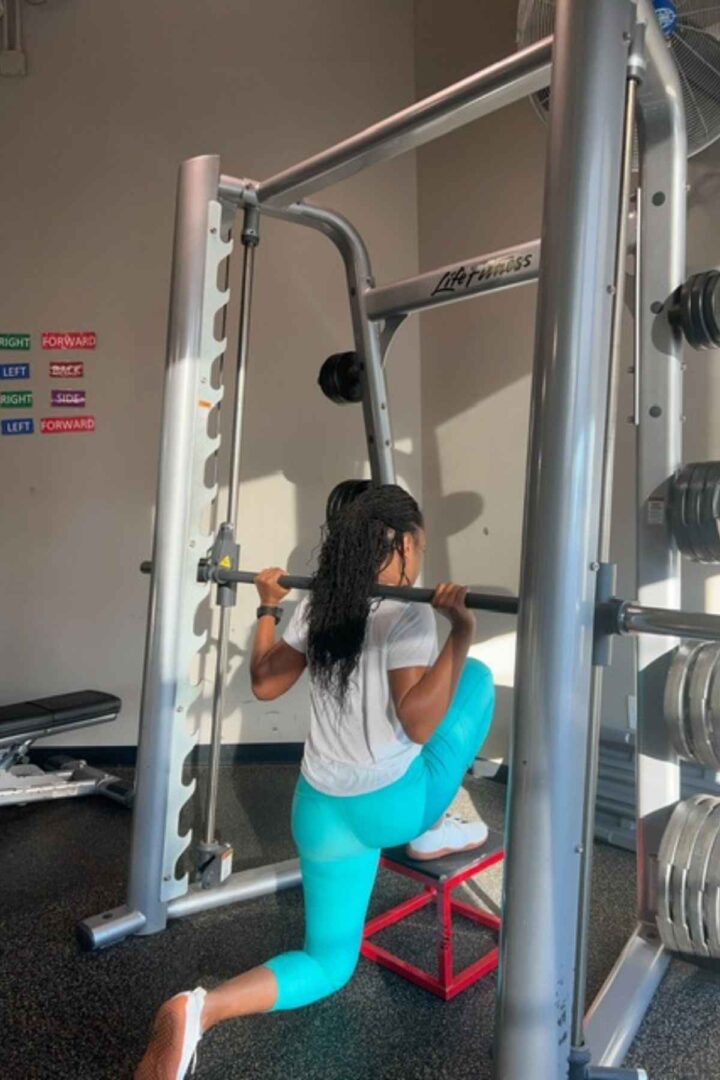
- Set the Smith machine bar to a high point and a bench or step slightly forward and centered.
- Step up on the bench or step with one leg with the Smith bar placed on your upper back, just above your rear delts.
- Garb the bar with a wider than shoulder-width grip and then squeeze your traps together. This creates a “shelf” for the bar to rest on.
- Step back with your strongest leg and keep your other foot planted firmly on the bench or step.
- Squat down until the knee of your back leg barely touches the ground.
- Press through the foot of your front leg to push yourself back up.
- Repeat with the other leg.
Single-leg deadlifts
Gently hold onto something to help maintain balance throughout the exercise.
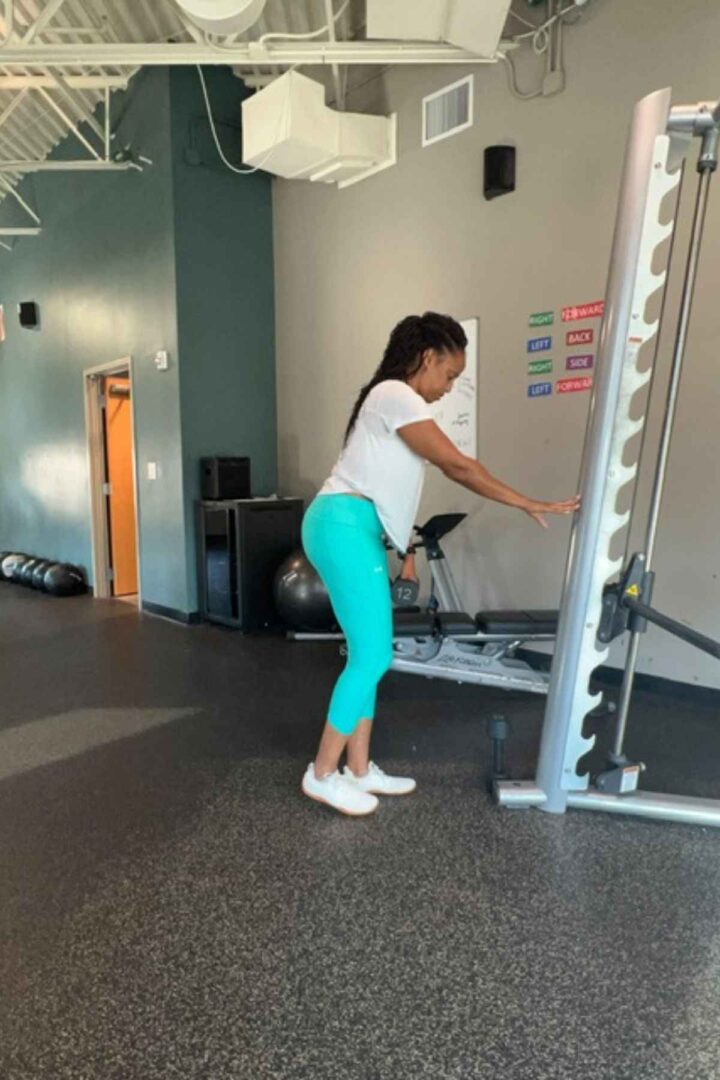
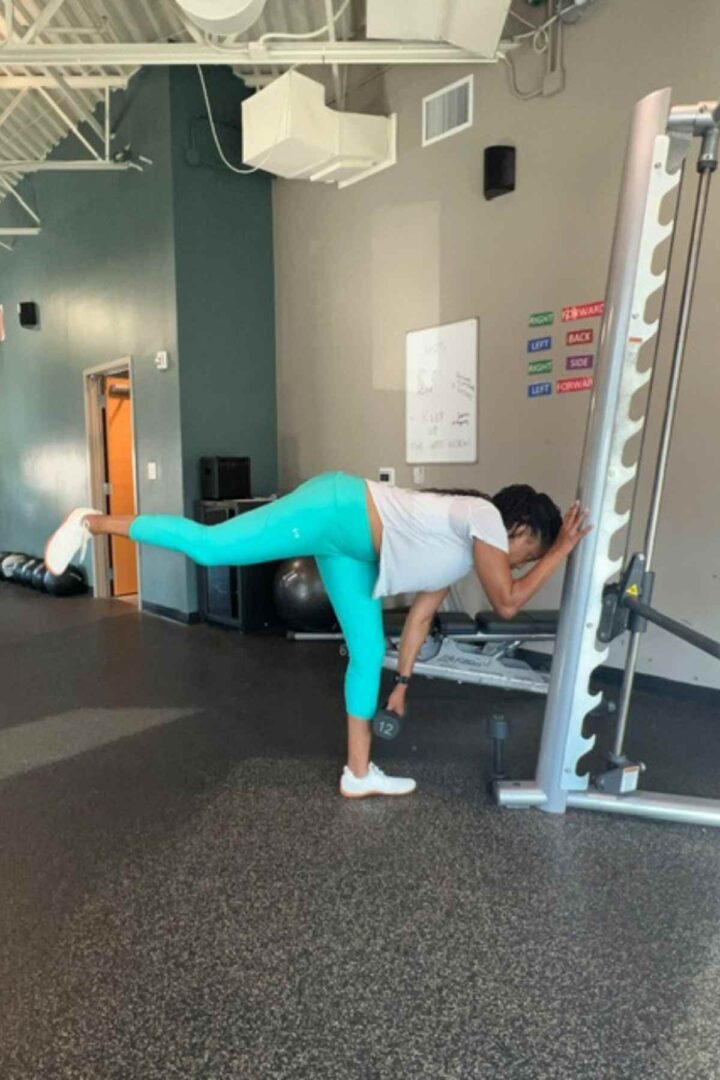
- Hold a dumbbell in your right hand with your feet shoulder-width apart.
- Lean forward in your hips, shifting your weight onto one leg (right leg) while your other leg engages and starts to extend straight behind you.
- Lift your extended leg and keep the dumbbell close to the leg planted on the floor.
- Keep a slight bend in your standing leg. Slowly bring in your extended leg and return to the starting position.
- Repeat with the other leg.
Cable kickbacks


- Stand facing towards the cable machine with the ankle cuff around your ankle.
- For support of your upper body, gently hold the machine.
- Lean forward halfway and bend your knee.
- Push through the right heel and extend your right leg as much as you can behind you.
- Do not arch your lower back and gradually return to your starting position.
Smith machine kickbacks


- Use a resistance band to secure the latch from rotating back and place the bar on a safety stop.
- Position yourself on the floor, resting your forearms down to stabilize your body.
- Placing the middle of one leg on the base of the bar.
- Slowly lower the bar down towards the floor, flexing at your knee.
- As your knee is approximately 2 inches from the floor push through your heel and raise the bar upward, extending your leg.
Hamstring curls
- Begin lying face down on the leg curl machine. Place your legs under the circular leg pad so that your legs are straight and the pad is resting between your calf and your ankle.
- Place both hands on the handles.
- While keeping your torso as still as possible, bend your left knee and push the circular pad up to bring your heel towards your glutes.
- Slowly extend your left knee to return to the starting position.
- Complete the specified repetitions on the same side before switching to the opposite leg.
Pistol squats (single leg squat)


- Stand with your feet shoulder width apart in front of a bench.
- Lift your left leg forward and hold it out straight and slightly in front of your torso.
- Extend your arms straight in front of you for balance.
- Perform a squat by bending at your right knee while keeping your torso upright.
- Lower down until you touch the box.
- Squeeze your glutes as you push into the right foot to stand back up.
Glute bridges
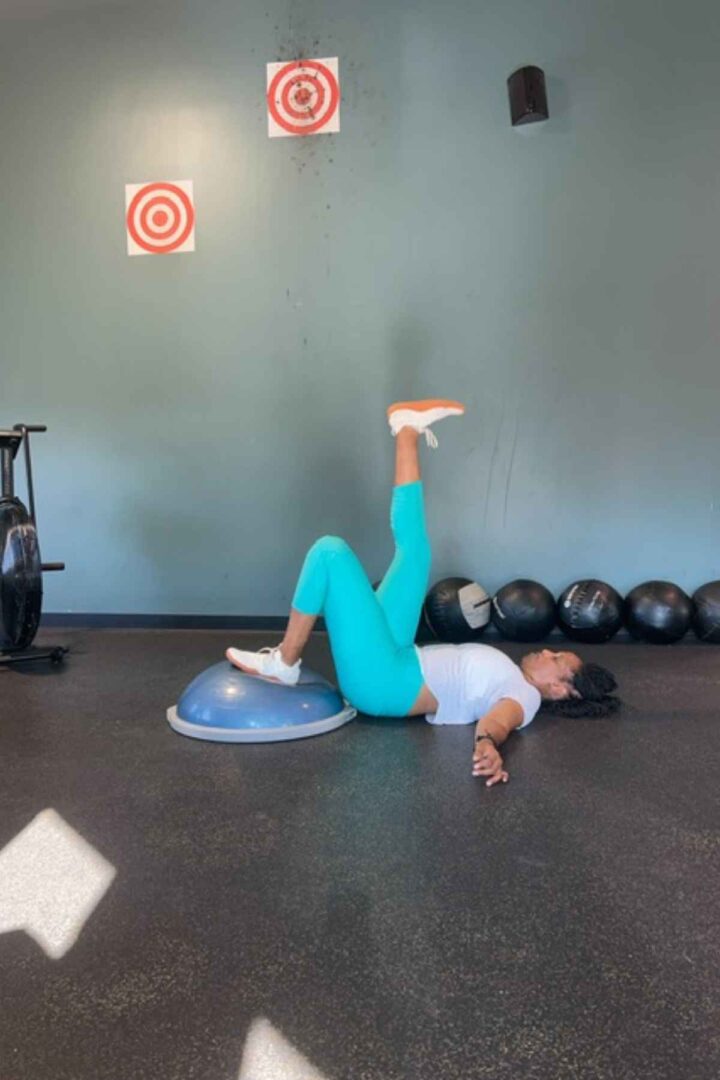

- Lay on your back with your palms face-down by your sides with your left foot on a Bosu ball.
- Extend your right leg in the air, squeeze your glutes and push into your left leg.
- While keeping your upper back in contact with the floor, lift your hips until your extended leg forms a straight line with your back.
- Lower back to the starting position and repeat.

